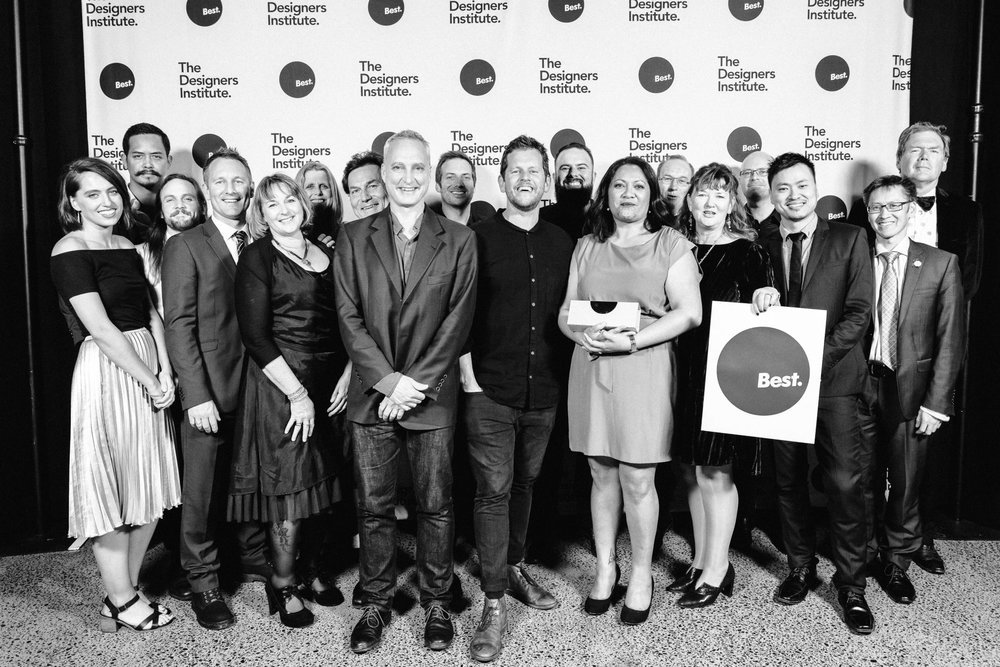“Aotearoaness and collaboration”: Some thoughts on nga aho best award
Toko Wānanga of Rongo-mā-Tāne, atua of peace, in the marae ātea at He Tohu. Carving by Bernard Makoare.
When he was told about plans for the exhibition He Tohu, a northern elder mentioned the prophecy of the seer Papahurihia, just after the Treaty was signed:
“We have been caught in a whirlpool. Alas, it will last for more than two hundred years, until the truth will stand to put everything right”
Perhaps He Tohu was a step in that process?
We love the work we do, and are proud of it. But we had never thought that anything we did might be part of the fulfilment of a prophecy...
When you suddenly see the world differently, it can feel like something has literally shifted inside you. It’s a good thing. But it can be uncomfortable.
It’s a feeling we often had during the 2½ years we worked on He Tohu, a display of New Zealand’s three most important founding documents (He Whakaputanga, the Treaty of Waitangi and the Women’s Suffrage Petition) at the National Library in Wellington.
By the time the project was finished, the way we think about our country ‒ and the process of creating an exhibition ‒ had changed. In both cases, the change was about the real meaning of partnership and collaboration. It was about how to create a space where many voices can be heard, rather than one.
The project began for us in the most low-key way possible. We saw a notice for something called the DIA Archives Exhibition Project, a display in the lobby of the National Library. It sounded vaguely corporate. Then it dawned on us that this was a reincarnation of that project ‒ the notorious “Treaty exhibition”, with its troubled backstory going back several years.
Should we put up our hand, or not? The words “poisoned chalice” sprang to mind. After a certain amount of angst we decided we would go for it. At that point we made an important call. Assembling a team of creative specialists that included Studio Pacific Architecture and Click Suite, we also went back to the early days of Story Inc, and approached Cliff Whiting, whom Steve had got to know during the installation of Golden Days, 20 years ago, when Cliff was the inaugural kaihautū at Te Papa. We were asking Cliff to help us not so much with design itself, as with advice on how to make our designs work in a cultural context that would be inclusive to Māori and all New Zealanders.
Cliff needed quite a bit of persuading to become involved. But once he did, he became a touchstone for the project. What impressed us most about him ‒ apart from simply being a kind, wonderful and extraordinarily creative person ‒ was his ability to think of spaces and visitor experiences from a very specific Māori cultural viewpoint, but then to generalize their meaning so that they would resonate with everyone.
Once we had the people in place, there was just the little matter of making it happen. Understandably, some members of the client team, having been through one or more aborted incarnations of the project, wondered aloud if this one would be destined for the same fate. To us though, it never seemed that the project might fail again, for a number or reasons. One was the idealistic energy that surrounded He Tohu: however difficult things became, there always seemed to be a eagerness on all sides to see it through. Secondly, a huge amount of work was done by senior people in DIA to make sure that the project was supported at the highest levels in government and in Māoridom. And finally, we simply had confidence ‒ born of long experience ‒ in our own ability to see projects through.
He Tohu was the most intensively collaborative and all-absorbing exhibition we have ever worked on. That collaboration was not always a yellow brick road strewn with rose petals. There were plenty of disagreements, mis-steps, and moments of anger. But every time the project seemed to have hit a road block, there was always a way around or through.
On 6 October 2017 He Tohu won a clutch of “pins” at the Best Design Awards in Auckland, including a gold in the Ngā Aho category. Ngā Aho means “the threads”, and is given for projects that show “Aotearoaness” and cross cultural collaboration. As the exhibition producer this award made me particularly proud ‒ because if He Tohu wasn’t about Aotearoa and collaboration, it wasn’t about anything.
In Memory of Cliff Whiting, 1936-2017, and Alexandra Collinson, 1986-2017
The team receiving Nga Aho Gold Award at the Best Design Award Night.



